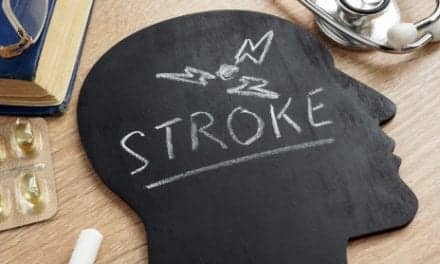Telemedicine seemed like a new idea at the outset of the COVID-19 pandemic. However, it now appears to be part of the new norm and might be paving the way to the future.
In a recent review paper published in Telemedicine and e-Health, Brodie Sakakibara, along with the Centre for Chronic Disease Prevention and Management (CCDPM), suggest that virtual appointments, in the form of telerehabilitation, could also work for people recovering from a stroke.
After a stroke, a client is provided with a therapy program to help re-gain loss of skills or motion — this can range from speech and memory, strength, balance and endurance. While not initially introduced for disease outbreaks, Sakakibara, a UBCO assistant professor, suggests that research shows remote therapy can be effective during stroke recovery, a media release from University of British Columbia Okanagan campus notes.
“Telerehabilitation has been promoted as a more efficient means of delivering rehabilitation services to stroke patients while also providing care options to those unable to attend conventional therapy. These services can be provided to remote locations through information and communication technologies and can be accessed by patients in their homes.”
— Brodie Sakakibara
How Effective Is it?
To learn how effective telerehabilitation can be, six different clinical trials — examining stroke telerehabilitation programs — were launched across Canada as part of a Heart and Stroke Foundation initiative. People recovering from a stroke were provided with interventions ranging from lifestyle coaching to memory, speech skills and physical-exercise training.
Researchers from each of the six trials came together to write a review paper describing their experiences conducting a telerehabilitation study, and to report on the facilitators and barriers to the implementation of telerehab services within a research context, Sakakibara shares in the release.
Going forward with telerehabilitation as a new reality, Sakakibara says the study authors determined there are important lessons learned from each of the six trials. Most notably, the efficacy and cost of telerehabilitation is similar to that of traditional face-to-face management.
He also notes patients mostly reported satisfaction with the telerehabilitation when therapists were trained appropriately, and when there was some social interaction. Overall, clinicians prefer face-to-face interactions but will use telerehabilitation when face-to-face is not feasible.
And finally, since seniors are a key target group for stroke rehabilitation — as stroke is associated with aging — the technology needs to be easy to use and suit the needs of the end users, the release continues.
“The older adult of today, in terms of technology comfort and use, is different than the older adult of tomorrow. While there might be some hesitation of current older adults using technology to receive health and rehab services, the older adult of tomorrow likely is very comfortable using technology. This represents a large opportunity to develop and establish the telehealth/rehabilitation model of care.”
— Brodie Sakakibara
[Source(s): University of British Columbia Okanagan campus, Science Daily]
Related Content:
Telerehabilitation May Be Effective for People with MS
MedRisk Expands Telerehab Services in Light of Coronavirus Outbreak
Telerehab vs In-Clinic for Post-Stroke Arm Weakness: Which One Wins?





